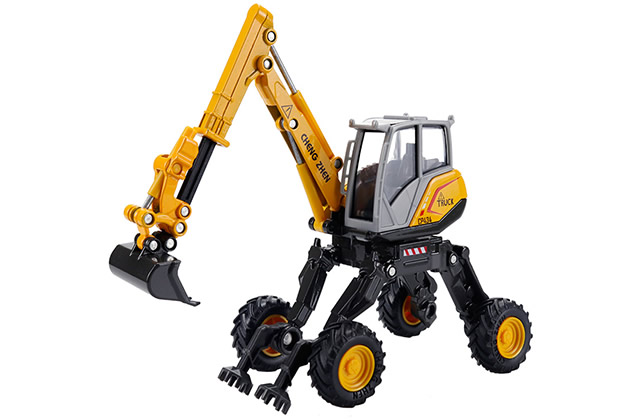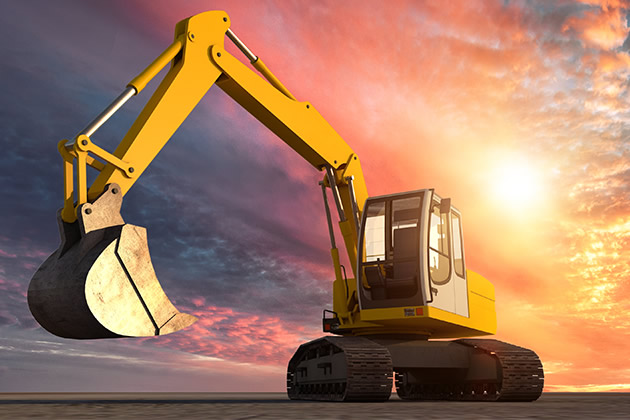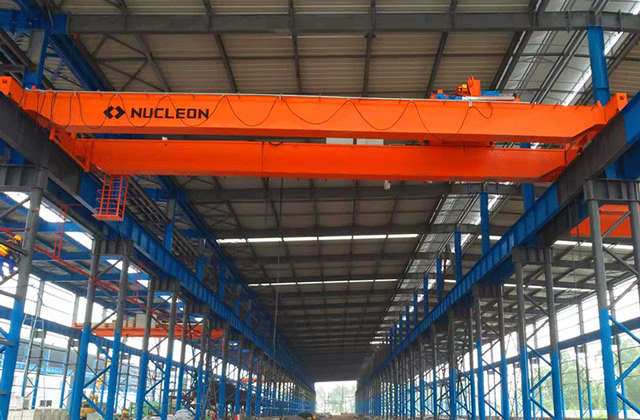[How to use a small crane] Tips for using a small crane Safety operating procedures for a small crane

Tips for using small cranes
A small crane is an ideal crane that is flexible, easy to operate, efficient and reliable. Heavy equipment, especially suitable for engineering operations. Especially when working in outdoor lifting, steel, timber markets and narrow construction sites, small cranes can better utilize their strengths. The correct use of small cranes can reduce machine wear and prevent malfunctions. It plays an important role in completing production tasks with high quality, low consumption and safety. Small cranes are installed on large construction sites using scaffolding, etc., and can be used as convenient tools for repair departments such as well digging, well repairing, and pump repairing. Small cranes are also new equipment used for production and assembly in factories and workshops. Small cranes are mainly suitable for lifting materials up and down in high-rise buildings, such as various decoration materials, construction and decoration waste, etc. They have unique advantages for long and wide materials such as wooden boards and gypsum boards that are inconvenient to transport in corridors. Therefore, small cranes have now become an important part of engineering projects. Tools commonly used in construction.
There are basically 10 operating methods for small crane lifting operations: lifting, prying, bundling, hanging, jacking, hanging, sliding, rolling, turning and rolling. Collectively called the “cross” operation method, if you master these 10 methods flexibly, you will get twice the result with half the effort.
① Lifting
When transporting small pieces of machinery and materials, due to the short transportation distance or inconvenience of mechanical transportation, the lifting method can be used, with two people or Many people work together. During operation, the levers and ropes used must be strong and suitable. Small crane operators are required to move in unison, obey unified commands, and have reasonable load distribution.
②Pry
When the lifting weight and lifting height are not large, you can use a crowbar to pry up the heavy object. Prying uses the principle of leverage to achieve the purpose of saving labor. Therefore, the fulcrum of the crowbar should be as close to the heavy object as possible, and the fulcrum should be harder. The crowbar can be used to raise the component so that wooden boards or bricks can be placed underneath it. You can also repeatedly pry the pad to raise the heavy object or use the opposite method to drop the heavy object.
③Bundling
Bundling refers to the operation of binding objects to be hoisted, moved or fixed with ropes and chains.Based on factors such as the lifting weight, the geometry of the object, the location of the center of gravity, whether the object is easy to deform and the process requirements of the hoisting, comprehensive consideration will be given to the bundling method and lifting points. The binding position should ensure the stability and balance of the hanging parts. The selected binding position should ensure that no plastic deformation is caused by the weight of the hanging piece. When lifting long components vertically, they should be tied at the top of the center of gravity of the object; when the object needs to be hoisted in a horizontal position, they should be tied symmetrically on both sides of the center of gravity. The binding should be strong and firm, and the force on each strand of binding rope should be even. When tying up angular objects, the edges should be padded with soft materials.
④Hang
Hang refers to the operation of hanging objects after they are bundled. Common hooking methods include single rope buckle hooks, double rope middle hooks, back buckle hooks, pressure rope hooks, etc. When hooking, pay attention to the center position of the hanging piece and that each rope is not stressed evenly. Under the action of inertial force and other external forces, the ropes of the hanging parts should not be displaced or squeezed against each other.
⑤Raising
Small crane Raising is the operation of using jacks to lift heavy objects. This method is simple, easy, safe and labor-saving, especially for some large objects. When a large crane is difficult to operate or the cost is high, a small crane can give full play to its advantages.
⑥ Hoisting
Hoisting refers to the operation of using a lifting mast or a small crane to lift heavy objects and place them at a designated location. This is the most commonly used method of vertical transportation. It is characterized by large lifting capacity, high lifting capacity, wide working surface, fast speed and high efficiency.
⑦Sliding
Sliding refers to the operation of placing heavy objects on the slide and pulling them mechanically or manually to make the heavy objects slide. It is generally used for short-distance movement or equipment unloading. Wait for the occasion. In order to reduce friction, rails are usually used as slideways. A sliding plate is placed between the rails and the weight, and lubricating oil is applied to the rails.
⑧Rolling
Rolling is a method of moving heavy objects using the rolling of rollers. It is usually used for short-distance horizontal transportation.
⑨Turn
Turn is an operation method to rotate a heavy object at a certain angle in a plane. You can use the rollers and raceways under the heavy object to rotate on the spot, or A special turntable can be set up to rotate heavy objects. ⑩ Rolling Rolling refers to the operation method of wrapping a rope around a cylindrical object, pulling the rope, and rolling the object up or down. It is often used for loading or unloading steel pipes, concrete pipes or electric poles.
Safe operating procedures for small cranes
1. Know your vehicle very well. You must know its functions and limitations, as well as some of its special operating characteristics.
2. You should be completely familiar with the contents specified in the small crane operation manual.
3. You should be completely familiar with the small crane lifting diagram. You must understand the meaning of all signs and warnings; you must be able to calculate or determine the actual lifting capacity of the small crane.
4. Regularly inspect and maintain the small crane according to the manufacturer’s requirements.
5. Keep a working log of the small crane and record in the log: detailed records of all inspections, maintenance and repairs to the small crane.
6. Find the load, install the lock, and figure out the specific location of the load. Although the operator is not responsible for determining the weight of the load, if he fails to verify the weight with the supervisor, he shall be responsible for the small crane and all its consequences.
7. Consider all factors that may affect the lifting capacity of the small crane, and adjust the lifting weight accordingly.
8. Know the basic procedures of how to assemble rigging on the load, and ensure that they are implemented in specific operations.
9. Maintain good communication with the signalman.
10, operate the small crane smoothly and safely.
11. When no one is operating the small crane, work should be stopped and it should be operated correctly.
If the website content violates your rights, please contact us to delete it。








